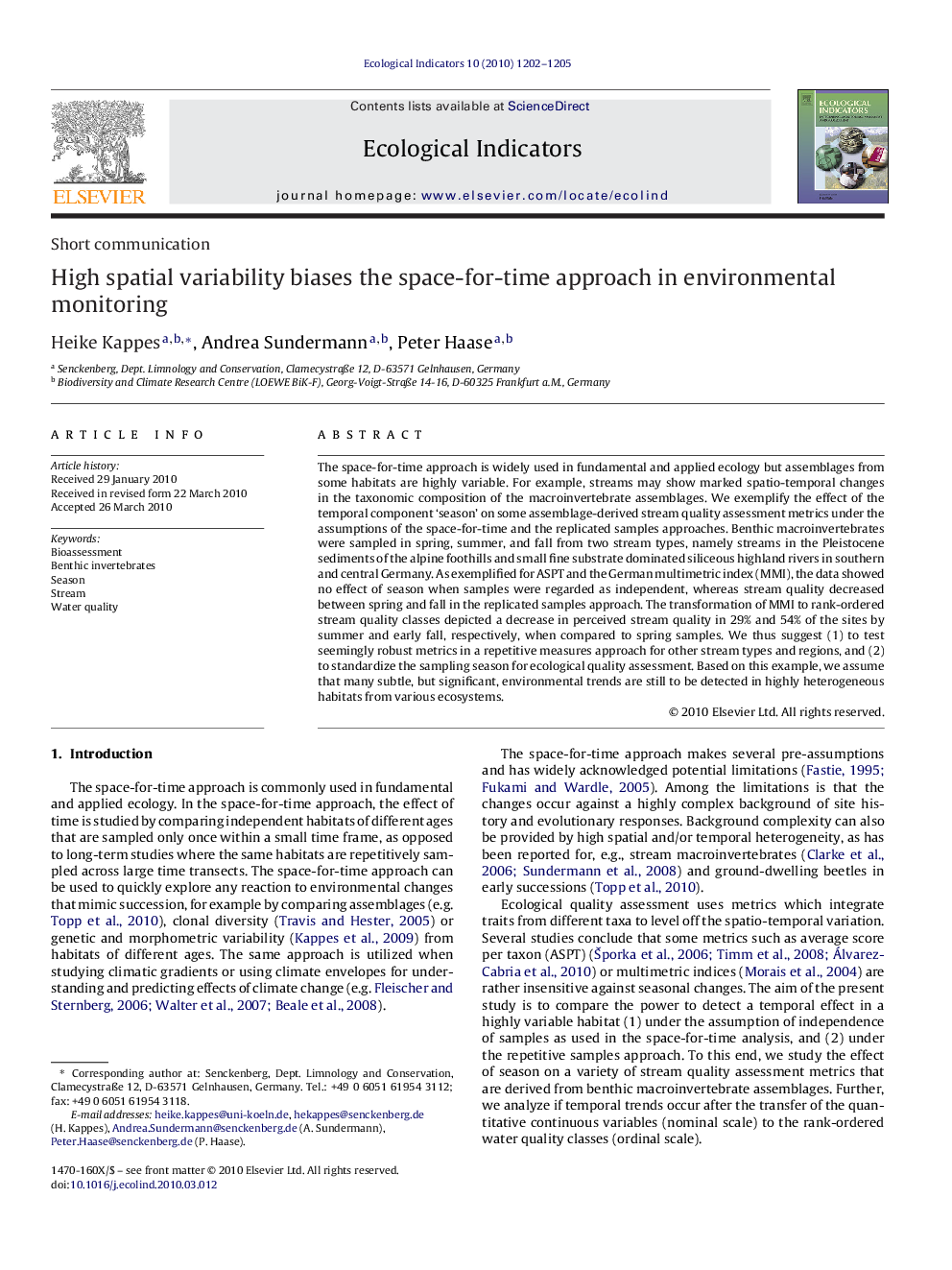| Article ID | Journal | Published Year | Pages | File Type |
|---|---|---|---|---|
| 4373865 | Ecological Indicators | 2010 | 4 Pages |
Abstract
The space-for-time approach is widely used in fundamental and applied ecology but assemblages from some habitats are highly variable. For example, streams may show marked spatio-temporal changes in the taxonomic composition of the macroinvertebrate assemblages. We exemplify the effect of the temporal component 'season' on some assemblage-derived stream quality assessment metrics under the assumptions of the space-for-time and the replicated samples approaches. Benthic macroinvertebrates were sampled in spring, summer, and fall from two stream types, namely streams in the Pleistocene sediments of the alpine foothills and small fine substrate dominated siliceous highland rivers in southern and central Germany. As exemplified for ASPT and the German multimetric index (MMI), the data showed no effect of season when samples were regarded as independent, whereas stream quality decreased between spring and fall in the replicated samples approach. The transformation of MMI to rank-ordered stream quality classes depicted a decrease in perceived stream quality in 29% and 54% of the sites by summer and early fall, respectively, when compared to spring samples. We thus suggest (1) to test seemingly robust metrics in a repetitive measures approach for other stream types and regions, and (2) to standardize the sampling season for ecological quality assessment. Based on this example, we assume that many subtle, but significant, environmental trends are still to be detected in highly heterogeneous habitats from various ecosystems.
Related Topics
Life Sciences
Agricultural and Biological Sciences
Ecology, Evolution, Behavior and Systematics
Authors
Heike Kappes, Andrea Sundermann, Peter Haase,
